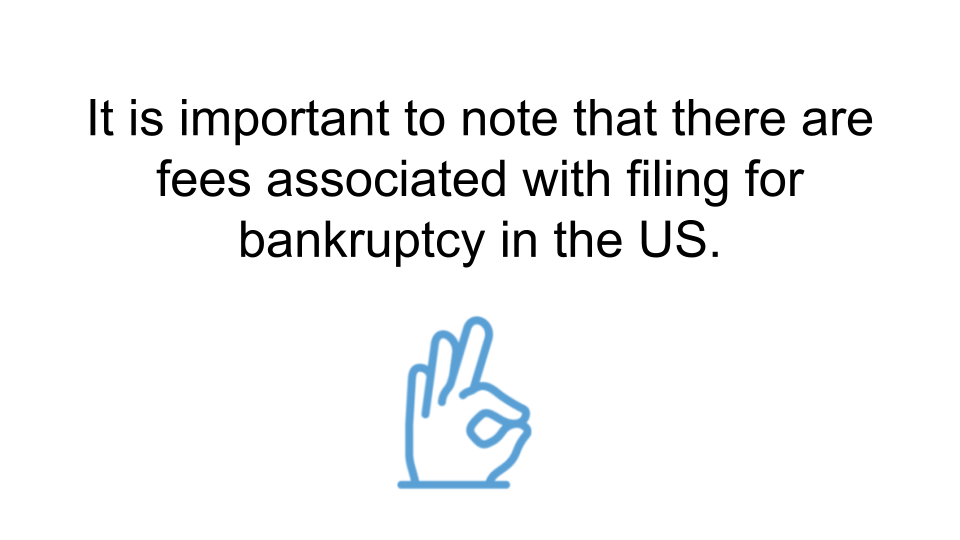According to the United States Courts, annual bankruptcy filings reached over 400,000 in 2021. There are a number of reasons that can be cited behind this total, including rising unemployment and the lasting impacts of the Covid pandemic on the US economy and its citizens.
What is Bankruptcy?
Bankruptcy is a legal proceeding that takes place in which an individual who cannot pay their bills is given a fresh financial start. It is governed by the United States Bankruptcy Code, a federal statute.
As such, the right for an individual or a business to file for bankruptcy in the US is provided by for federal law, with all bankruptcy cases handled by the federal court.
If you file for bankruptcy, you are referred to as a debtor. If you are successful, you may be able to get most, if not all, of your bills wiped out, you can keep your property which otherwise may have been lost to creditors, and you are granted extra time to pay off your bills if you do have a regular income.
There are two forms of bankruptcy in the US – Chapter 7 and Chapter 13. Chapter 7 bankruptcy refers to when an individual files a petition asking the federal court to discharge their debts in exchange for giving up your property. Chapter 13 bankruptcy refers to when an individual files a plan to the federal court showing how they plan to pay off their debts over an extended period. Once they have completed this payment plan, then their unpaid balance on the remaining debt is wiped out.
The central difference between a Chapter 7 and a Chapter 13 bankruptcy is that a Chapter 13 case will allow an individual to keep their property which might otherwise be lost. Chapter 13 bankruptcy cases are most relevant for individuals who may own their own home, have a regular income and are able to eventually catch up on their most important debt repayments.
Are There Any Alternatives to Filing for Bankruptcy?
Yes, there are a number of alternatives to filing for bankruptcy. Alternate forms of debt relief in the US that you may be able to pursue include non-profit credit counseling, debt management plans, debt consolidation and debt settlement.
Bankruptcy may not be the best option, and cannot eliminate all debts. For instance, you may not be able to wipe out certain times of student loan debt or unpaid taxes.
It is important to consider the alternatives prior to filing for bankruptcy as declaring it will leave a mark on your credit report for seven to ten years, making it more difficult to borrow money in the future or get a credit card.
What Will it Cost Me to File for Bankruptcy?
It is important to note that there are fees associated with filing for bankruptcy in the US. It costs $335 to file for a Chapter 7 bankruptcy and $410 to file for a Chapter 13 bankruptcy.
If you are unable to pay the fee upfront all at once, then the federal court may allow you to pay it in installments. Furthermore, if your income is extremely low then the filing fee for Chapter 7 may be waived by the federal court altogether.
What Steps do I Need to Follow to File for Bankruptcy?
There are 9 following steps that you must follow in order to successfully file for bankruptcy:
1) Choose which type of bankruptcy you are going to file
You must firstly decide whether you wish to pursue a Chapter 7 or Chapter 13 bankruptcy. Chapter 7 bankruptcy is the most common type.
If you decide to pursue a Chapter 13 bankruptcy, then be aware that this is a more complicated process and may take longer.
2) Hire an attorney
Since bankruptcy cases are granted through US federal courts, you must have an attorney.
If you are unable to afford one, you should consult your state bar association, the American Bar Association or a local legal aid clinic. They may be able to provide affordable or even free attorneys to help assist you with your bankruptcy proceedings.
There is another option that is less popular where you choose to represent yourself, known as going ‘pro se’. Around one in nine Chapter 7 bankruptcy cases are pro se. However, pro se bankruptcy filers have bene found to be nearly 10 times more likely to have their cases either dismissed or their requests denied. You cannot go pro se if you are pursuing a Chapter 13 bankruptcy.
Once you hire an attorney, you should expect them to direct you to gather all relevant documents. They will then examine these and complete and file the necessary paperwork to represent you in federal court.
3) Complete a credit counseling course
You must complete a credit counseling course before you file for bankruptcy. The course must be taught from a government-approved organisation and completed within an 180-day period prior to filing for bankruptcy.
A credit counseling course will help you to decide whether to seek bankruptcy or pursue an alternative measure. The courses cost around $50 and can usually be completed online, by phone or in person. If your income is extremely low, you may be able to get the cost of the course waived.
Once you have completed the course, you will need to show a certificate to the federal court.
4) Fill out the forms required by the federal court
Federal courts will require you to fill out a long list of forms for bankruptcy cases. The forms can be downloaded from the United States Courts website here.
It is important to ensure that you fill out the forms both fully and correctly as any errors may cause your bankruptcy filing to be consequently rejected.
5) Pay your federal court fees
As well as the basic fees, there are additional court costs that must be paid for bankruptcy cases. These include administrative fees and trustee surcharges. Further additional payments could include getting copies of your certified documentation.
If your income is deemed extremely low then you may be able to get these fees waived.
6) File the forms with the federal court
You must then file the forms with the federal court. This includes making a visit to the courthouse and presenting all of your forms to the clerk.
Once your petition has been filed, the federal court will then appoint a trustee to oversee your bankruptcy case. This trustee will communicate with you via phone or email, and will request copies of your forms so ensure that you have these to hand.
7) Meet with your creditors
You may not be required to make an appearance in federal court. Instead, you may be required to show up for a meeting with your creditors, known as a 341 Meeting. Your trustee will also be present in this meeting where your current financial situation will be discussed.
8) Complete debtor education
As mentioned earlier, prior to filing for bankruptcy you are required to complete a credit counseling course. As well as this, you will need to complete a post-filing debtor education course before your debts can be wiped out.
This course must be taken through a government-approved organisation and you must present your certificate once completed.
The course costs between $50-100 and will help you to learn how to budget and manage your money, especially with regards to using credit wisely.
Will Filing for Bankruptcy Impact my Credit Score?
Yes, filing for bankruptcy will appear on your credit record for up to 10 years. However, since it will wipe out your old debts, this should allow you to be in a better position to pay off current bills. As such, it may also help you to eventually receive a positive credit score.



